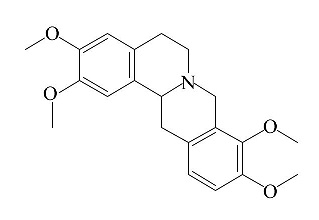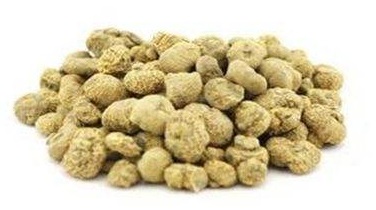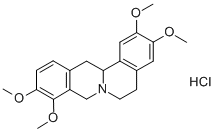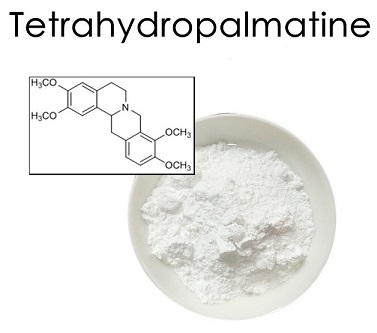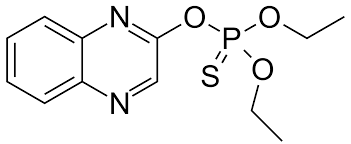Tetrahydropalmatine: Properties, Pharmacological effects
Physical & Chemical Properties
Tetrahydropalmatine is colorless or light yellow flaky crystal with slightly bitter taste and no odor. Melting point: 147-149 ° C. Its color turns dark gradually when meeting with light. Easy to be soluble in ether, chloroform, soluble in ethanol, almost insoluble in water or alkaline solution. Both the hydrochloride and the sulfate of di-THP are soluble in water. It is a racemate. The effective part is the laevo isomer which is called Rotundine. Melting point: 147 ° C. The melting point of dl-THP with crystalized water: 115 ° C.
Pharmacological effects
1. Analgesic and anesthetic effects
The analgesic effect of this drug is related to central dopamine receptor activity. L-tetrahydropalmatine may enhance the analgesic potency leves of electroacupuncture and prolong the analgesic effect of electroacupuncture. Tetrahydropalmatine may produce analgesic effects by blocking D1 dopamine receptors and increasing the content of striatum leucine enkephalin in brain tissues.
2. Protective effect on cerebral ischemia-reperfusion injury
L-THP has protective effects on neurons in ischemic brain injury, and studies have shown that L-THP reduces the expression of ICAM-1 in endothelial cells during the cerebral ischemia-reperfusion. The L-THP’s significant reduction of neuronal apoptosis caused by reperfusion injury is associated with its inhibition of calcium ion aggregation. L-THP reduces the Glu content in mouse brain tissues and decreases the Glu / GABA ratio, which may be one of the mechanisms of L-THP brain protection during the incidence of cerebral ischemia, and this provides some information for its clinical use in the treatment of cerebral ischemia treatment.
3. Inhibition of platelet aggregation
Experiments have shown that intravenous injection of dl-THP (15, 7.5 mg•kg-1) had a significant inhibitory effect on cerebral thrombosis in rats. dl-THP is also effective against the inhibition of adenosine diphosphate, arachidonic acid and collagen induced rabbit platelet aggregation in a dose-dependent manner, and the remaining effects may be produced by antagonizing the action of calcium ions.
4. Anti-ulcer and inhibition of gastric acid secretion
Containing dehydrocorydaline, a small amount of tetrahydropalmatine and the extract of fumarine opioid, it has obvious effects on gastric and duodenal ulcer disease. Clinically, corydalis is used to prepare some traditional Chinese medicine for oral administration which is effective against stomach, duodenal ulcer, stomach pain and hyperchlorhydria.
Corydalis has the effects of anti-pyloric ligation ulcer, water-immersion stress ulcer and histamine ulcer for rattus norvegicus. Although it inhibits acetic acid ulcer, but is not effective for reserpine ulcer. dl-THP shifted the dose-response curve of histamine non-parallel to the right and decreased the maximum acid-reaction, suggesting non-competitive inhibition.
5. Antineoplastic effects
dl-THP has killing effects on tumor cells in vitro when administrated with high concentrations.
6. Withdrawal effect on addictive drugs
The pharmacological effects of L-tetrahydropalmatine’s alleviation on withdrawal symptoms and addiction to morphine, heroin and other opioids, amphetamine, methamphetamine and other drugs, and its influence on mental dependence provide much experimental evidence for its use in the treatment of opioid addiction, withdrawal and relapse prevention.
Reference
Warren, P. 1997. Hazardous gases and fumes—A safety handbook. Amsterdam: Elsevier.
National Institute for Occupational Safety and Health (NIOSH). 1992. Recommendations for occupational safety and health: Compendium of policy documents and statements.
Cincinnati, OH: U.S. Department of Health and Human Services, Public Health Service, Centers for Disease Control, NIOSH Publication No. 92-100.
American Conference of Governmental Industrial Hygienists (ACGIH). 1994–1995. Threshold limit values for chemical substances and physical agents and biological exposure indices. Cincinnati, OH: ACGIH.
Agency for Toxic Substances and Disease Registry (ATSDR). 1998. Toxicological profile for sulfur dioxide. Atlanta, GA: U.S. Department of Health and Human Services, Public Health Service (updated 1999).
You may like
Related articles And Qustion
See also
Lastest Price from TETRAHYDROPALMATINE HYDROCHLORIDE manufacturers

US $0.00/kg2025-05-07
- CAS:
- 6024-85-7
- Min. Order:
- 1kg
- Purity:
- 0.99
- Supply Ability:
- 1000kg
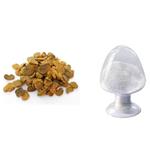
US $0.00/KG2025-04-21
- CAS:
- 6024-85-7
- Min. Order:
- 1KG
- Purity:
- ≥98% HPLC
- Supply Ability:
- 1000KG
